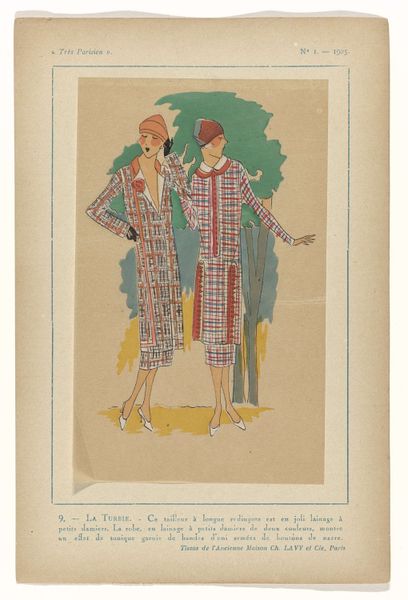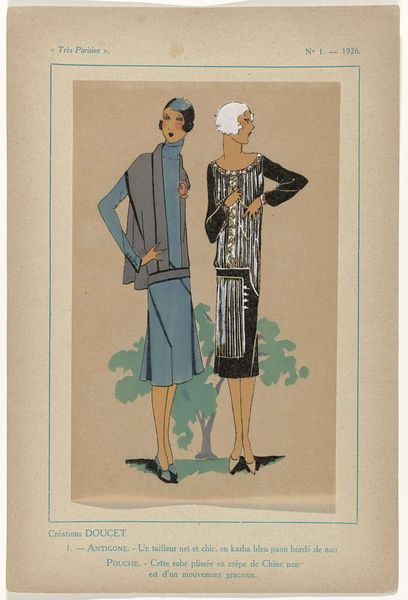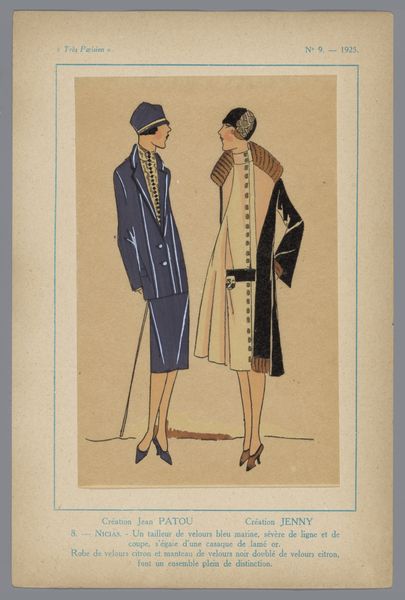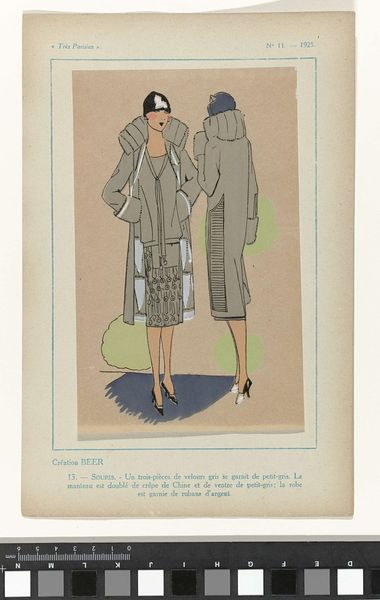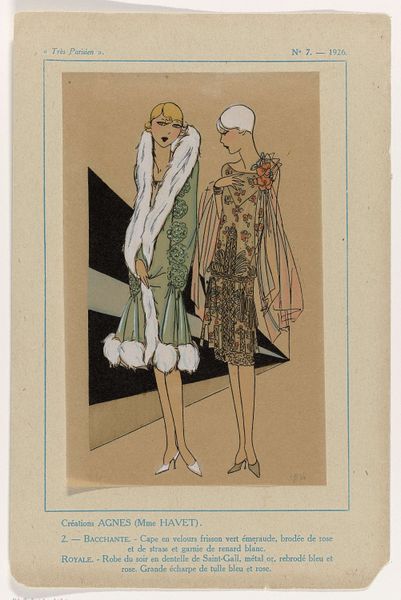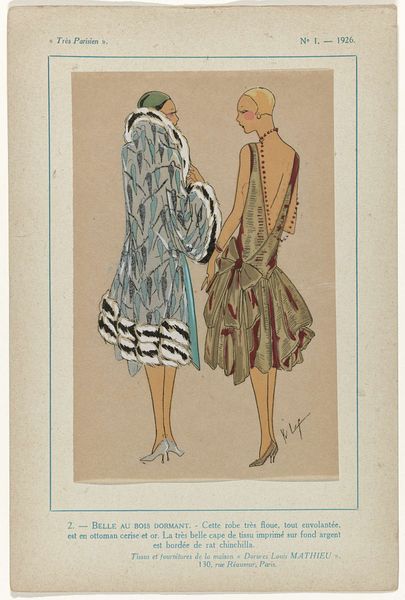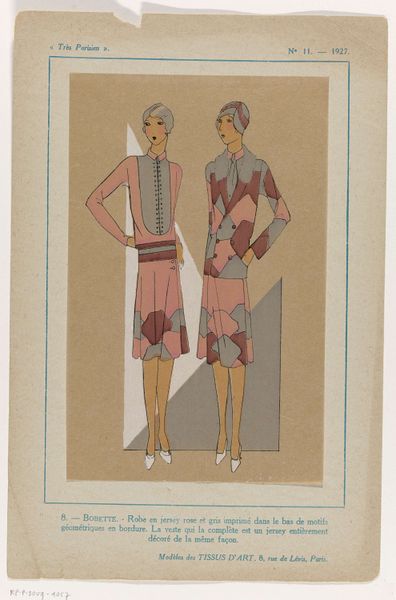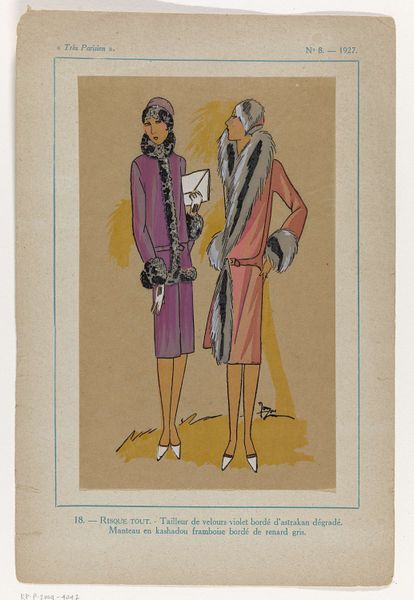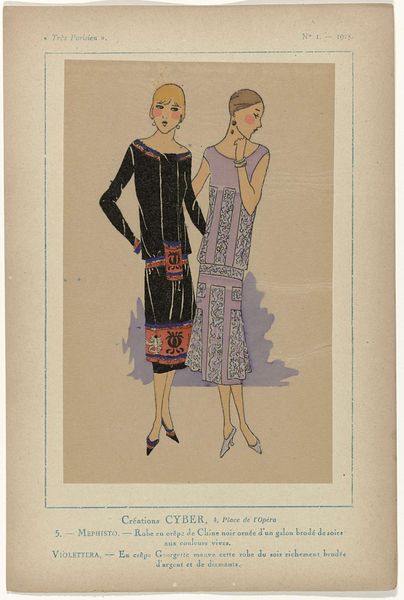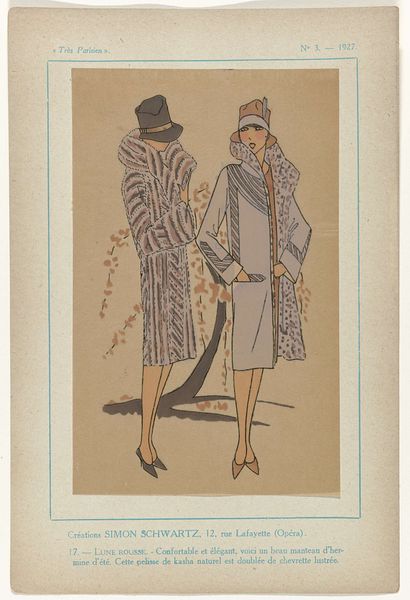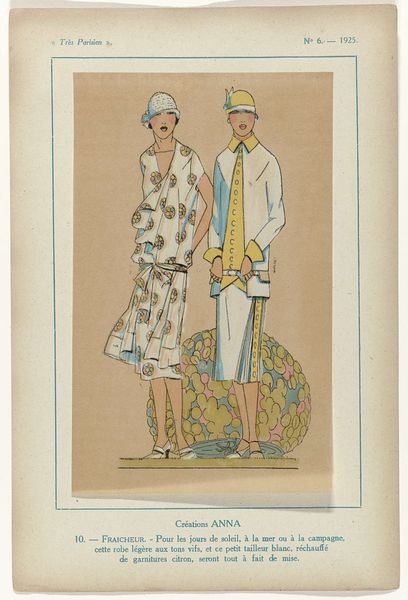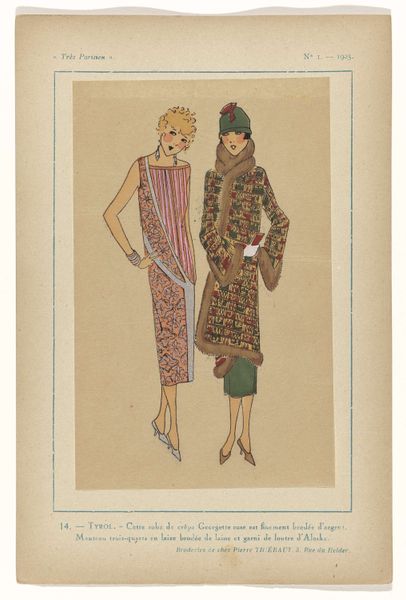
drawing, print, ink
#
portrait
#
art-deco
#
drawing
#
blue ink drawing
# print
#
ink
#
watercolour illustration
#
cartoon carciture
Dimensions: height 267 mm, width 177 mm
Copyright: Rijks Museum: Open Domain
This fashion plate called "Très Parisien" was made by an anonymous artist around 1927. It’s got this real elegant, pared-down feel, all about capturing the essence of design with simple lines and muted colours. It makes me think about process, about what it means to strip things down to their most essential form. There's this gorgeous sense of flatness. It's like the artist is playing with the idea of surface and depth at the same time. The textures are suggested rather than depicted, which leaves so much room for the imagination. The dress on the right, with its bold floral pattern, is just everything, isn't it? The way the black shapes are scattered across the fabric, it's like a dance across the surface. It reminds me a little bit of Matisse's paper cut-outs, actually, in how it uses simple shapes to create such a vibrant and expressive composition. Art is just a conversation, an ongoing exchange of ideas across time.
Comments
rijksmuseum about 2 years ago
⋮
Très Parisien promoted itself as chic and elegant. Between 1920 and 1936 it presented creations by such couturiers as Chéruit, Premet, Philip et Gaston, and Lanvin. The young, svelte models are all ultra-modern, shown talking on the phone, smoking and playing tennis. The illustrations also show that over the course of the 1920s, skirt lengths had risen to just below the knee, before dropping back down to calf length in the 1930s. The small plates were printed on transparent paper using a stencilling technique known as en pochoir and then hand coloured; many of them are unsigned. The signature ‘Joujou’ belonged to Germaine Paule Joumard, who was the director of Très Parisien, as well as one of the magazine’s illustrators.
Join the conversation
Join millions of artists and users on Artera today and experience the ultimate creative platform.
